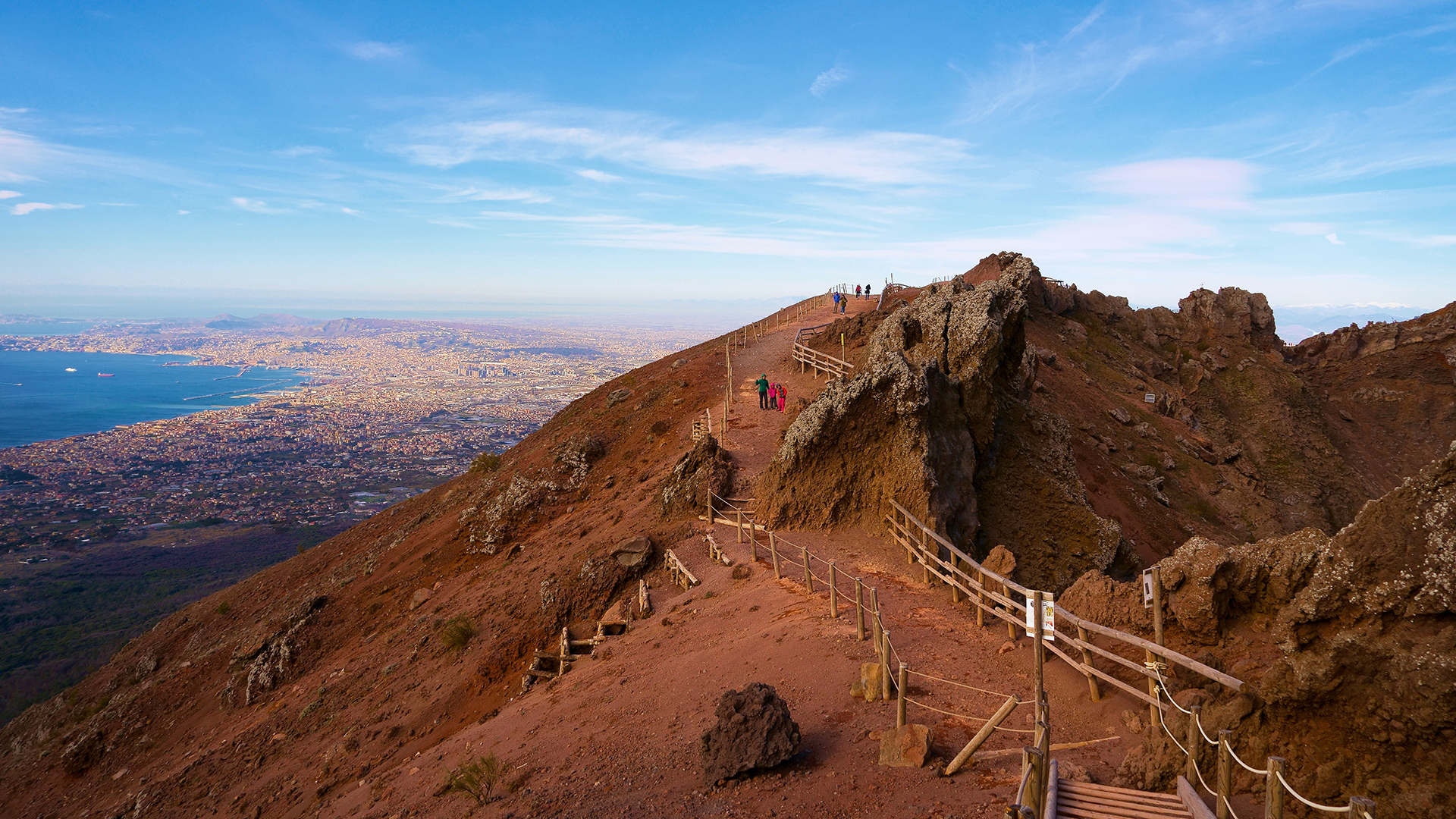A tourist visiting Mount Vesuvius dropped his phone. Then he fell into the volcano.
The route was off limits to the public.

A tourist trying to reach his dropped phone took a tumble into Mount Vesuvius this weekend.
The 23-year-old was rescued and treated for minor injuries, according to Sky News, but now faces charges for being on a closed route near the active volcano's summit.
The accident occured on Saturday (July 9), after the young American tourist accidently dropped his phone into the crater at Vesuvius' peak. While scrambling down several meters to reach the phone, the man lost his balance and fell several meters more. According to The Guardian, local guides rappelled down to rescue the man, who was treated for cuts and bruises. A mountain rescue helicopter was also launched to assist.
Related: Mount Vesuvius didn't kill everyone in Pompeii. Where did the survivors go?
Vesuvius is a stratovolcano towering 4,042 feet (1,232 m) tall. Its crater, formed in a 1944 eruption, is about 1,000 feet (305 m) deep. The mountain is a popular hiking destination, but there are no public trails into the steep-walled crater. The volcano has not experienced any significant eruptions since the 1944 blast, but it is nonetheless closely monitored. More than 700,000 people living in the immediate vicinity would need to be evacuated in the event of a large eruption, and millions more in the port city of Naples and its surroundings would be affected.
For now, the "Gran Cono" on top of Vesuvius is dangerous not because of imminent eruptions, but due to the effects of gravity. The walls are made up of steep cliffs and volcanic scree, or broken fragments of rocky debris. The crater also hosts active vents that occasionally burp out steam and gas. The rescued tourist and several family members who were with him had taken a route up the mountain that was closed and marked as dangerous, according to The Guardian. All now face charges for invasion of public land.
Considering the risks of trespassing near the summit of an active volcano, the man was lucky to have escaped with only minor injuries. In 2019, a 32-year-old man was seriously injured after climbing over a barrier around the crater of Hawaii's Kilauea volcano; the ground beneath him crumbled, and he fell 70 feet (21 m). In January, a 75-year-old Hawaiian man was found dead after falling 100 feet (31 m) into the same crater. A similar tragedy occured in 2017 at Solfatara Crater, not far from Vesuvius in Italy, when an 11-year-old boy fell into boiling mud and his parents tried to save him; all three died.
Get the world’s most fascinating discoveries delivered straight to your inbox.
Vesuvius is most famous for its A.D. 79 eruption that entombed the towns of Herculaneum and Pompeii in a pyroclastic cloud of ash. That eruption killed thousands – the exact death toll is unknown – with a rain of ash and rock, extreme heat, and suffocating clouds of toxic gas.
Originally published on Live Science.

Stephanie Pappas is a contributing writer for Live Science, covering topics ranging from geoscience to archaeology to the human brain and behavior. She was previously a senior writer for Live Science but is now a freelancer based in Denver, Colorado, and regularly contributes to Scientific American and The Monitor, the monthly magazine of the American Psychological Association. Stephanie received a bachelor's degree in psychology from the University of South Carolina and a graduate certificate in science communication from the University of California, Santa Cruz.
